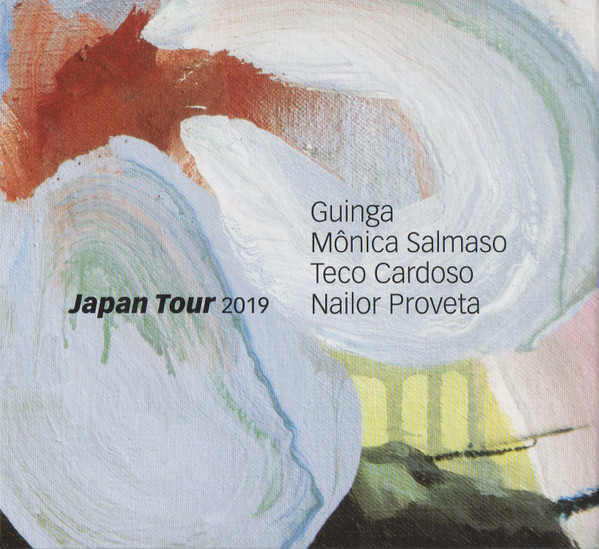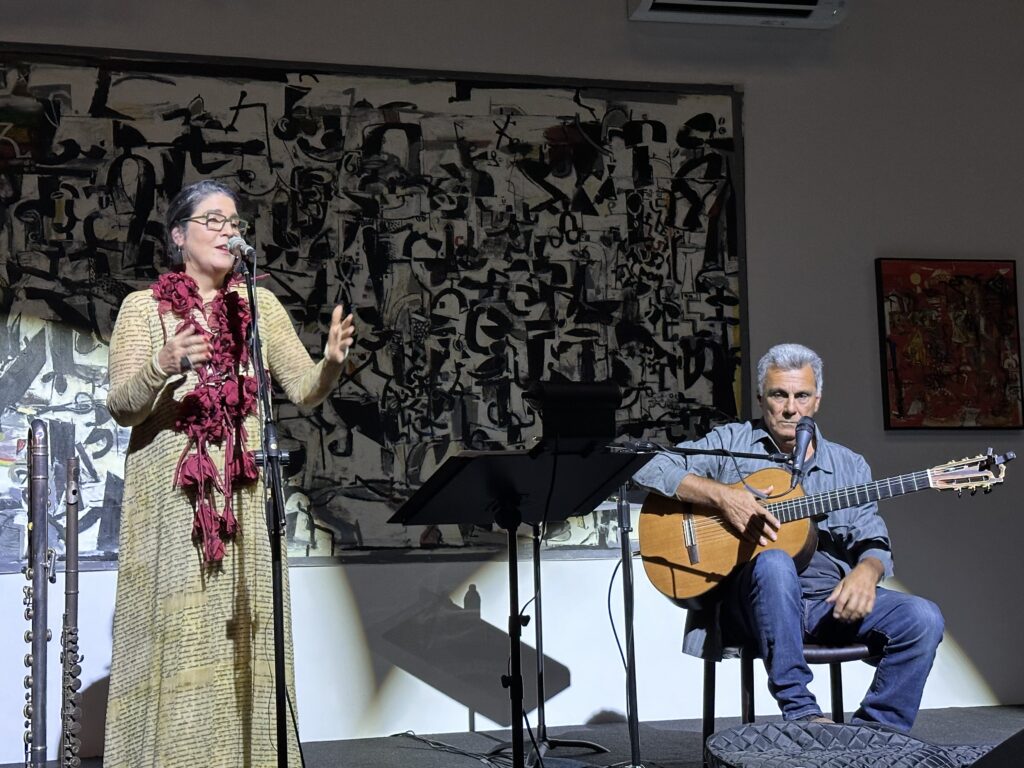Monica Salamaso trio live



I’ve been a fan of Monica Salmaso for a number of years, first encountering her on a couple of albums by the now defunct group Vento em Madeira. This was a kind of super group of Brazilian artists which created unbelievably sophisticated, free and adventurous music, some of which seemed to be comprised of intricately written out arrangements, but according to Ms Salamaso, were completely made up and refined in the studio on the fly and then rigorously rehearsed. Yet the evolved arrangements are balanced with free playing, loosening up the music with a completely spontaneous vibe that entices the listener to revisit these albums. My favorite of the three albums put out by this group was Brasilia. All three are sadly out of print, but worth tracking down.
Two of the artists featured in that group were in the trio I saw last Saturday evening at the 222, a gallery turned performance space in Healdsburg California. Because of the yearly Brazil camp in nearby Cazadero, Brazilian artists sometimes perform in Healdsburg before heading home. This year, the trio of vocalist extraordinaire, Mônica Salmaso, Guinga, one of Brazil’s most celebrated composers and guitarists, took the stage with the amazing multi-instrumentalist Teco Cardoso on flute, alto flute, bass flute and soprano sax. This trio sounds like a chamber group that happens to play Brazilian jazz, (or perhaps the other way around.) The result was an intimate, passionate performance that pulled on one’s heartstrings one minute and swung madly the next. All three of these artists are virtuosos, but the secret ingredient that really elevates this music is the compositions of the incomparable Guinga. The trio played his compositions exclusively last Saturday night, with the exception of the encore. Guinga’s music is sophisticated both harmonically and melodically, and as complex as some of it is, it gradually gets under one’s skin.
Salmaso possesses an amazing instrument. Sensual, passionate and soulful, this isn’t your breathy Astrid Gilberto type singer (and don’t get me wrong, I like Astrid). Monica’s technique is anything but monochromatic, possessing a palette of colors that covers the entire rainbow of human expression. I only wish I understood the lyrics, because she performs with her entire being, investing her whole self in the stories told in these hauntingly beautiful songs.
Guinga is the consummate accompanist, laying down the backing with a sure hand and an effortless technique, an unerring rhythmic sensibility, all the while casually demonstrating an encyclopedic knowledge of the fretboard, which is always in service to the music. His style is the epitome of good taste. His writing melds the various Brazilian traditions, both folkloric and modern, sprinkling in classical motifs and harmony, occasionally borrowing from the language of Debussy, Ravel and Villa Lobos.
Teco Cardoso delivers a varied banquet of colors on his flutes and sax. He started the set on the rare bass flute, which he played exclusively for the first few tunes. He layed down deep, tasty solo lines, countermelodies and audible percussion parts played on the instrument’s keys. Teco seemed to favor the soprano sax for solos, each one a textbook example of perfect execution and conception, infused with fiery soul. His is a jazz oriented vocabulary, but he peppers it with folkloric flourishes and the result is utterly enchanting. At one point he brought a set of indigenous double wooden flutes, which I first heard on Egberto Gismonti’s classic Solo Meia Dio. But being a wind player, Cardoso took it up several notches, and mesmerized the audience with his bird calls and lovely melodic fills, instantly evoking the depths of the Amazon jungle.
Although the trio leaned heavily into slower, introspective pieces, make no mistake – this little group can really groove. Monica sometimes played pandeiro (and even a camping frying pan,) and really kicked up the excitement on the sambas.
I have a number of Salamonso’s albums. They are all quite different from one another. Some are quite densely arranged, as on her 2004 release, IaIa, and in contrast, her more recent Milton, which features Milton Nascimento’s compositions exclusively, is accompanied solely by master pianist, Andre Mehmari. I tend to prefer the less dense albums.
I searched to see if the trio I saw had any albums out, and the closest thing I could come up with was the Japan Tour 2019, which features the aforementioned three players with the addition of clarinetist Nailor Proveta. It’s a wonderful live performance which features a number of pieces featured in the set I heard, and really captures some of the magic of that memorable evening.
Romantic yet unsentimental, this music covers the spectrum of human emotion. I highly recommend exploring this artist and her talented compatriots.
2 Kommentare
flowworker
There’s an Brazilian focus in your last posts, and I am just looking (again) Zero Gravity, part 2, the doc on Wayne Shorter’s life. I write you something about Wayne’s album, cause I have to interrupt the viewing session cause the Wireless has problems. Suddenly i see Wayne in the company of Milton N, forgot about that period of his music…. and don’t know NATIVE DANCER….now the music of his late quartet, and Celebration Vol. 1, even makes more sense to me…. it is defnitely floating music… the old compositions like sign posts, between being there, in a distance, floating, vanishing…. the more i think about CELEBRATION, the more i think i better be quiet on air…. i do nut trust these old words. Telepathy, elavation and so on… better turn the light out and listen 😂😅
Brian Whistler
I love the Shorter doc and am planning to watch it again soon.